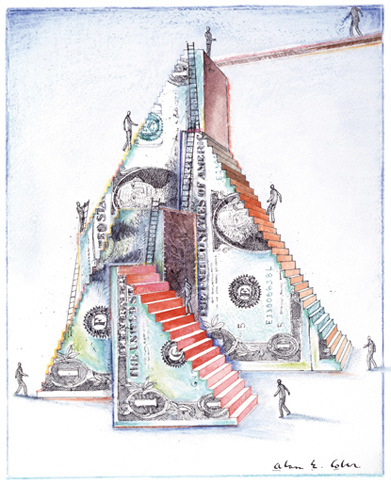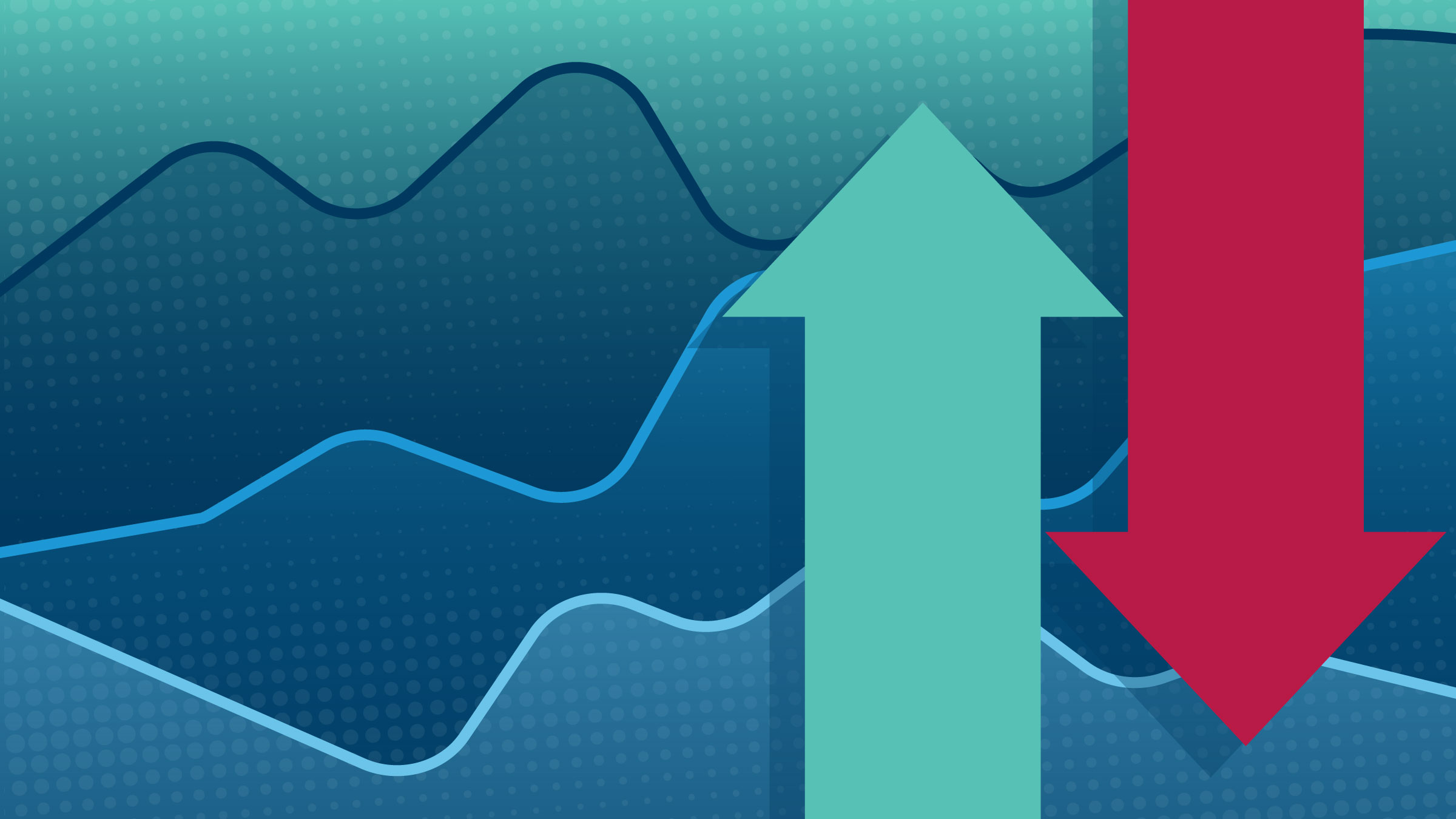Scale Economies in Banking—Related Articles:
Scale Economies in Banking

Economists have studied the presence of economies of scale in banks for some time. But until recently, this body of research has remained the province of the cognoscenti. The financial crisis and resulting efforts to reform financial regulation have given the topic increased attention among economists and others. Arguing that some banks have grown too big and that size brings with it substantial costs to society—including government bailouts—many prominent observers have advocated breaking up the largest banks. These breakup proponents contend that the economic literature does not find that “large” means more efficient for banks. In other words, they argue that the research shows that in the financial industry as a whole, significant economies of scale do not exist.
Perspective on the bank economies-of-scale literature, in general—and its use in recent regulatory reform, in particular—would therefore be of great value, so I am very pleased that two experts in this area agreed to present their views in a Region “symposium.” Loretta Mester of the Federal Reserve Bank of Philadelphia and the Wharton School at the University of Pennsylvania discusses the most recent findings from the literature. Robert DeYoung of the University of Kansas, a permanent visiting scholar at the Federal Reserve Bank of Kansas City, highlights some specific limitations on what economists and policymakers can actually know about economies of scale from the current literature. In my essay, I’ve sought to provide additional context to the overall debate and for the other two essays.
Mester, DeYoung and I share two common, overriding conclusions: First, there remain important unanswered questions about economies of scale in banking. Research that provides answers to such questions will have a high return. Second, even if research shows the presence of economies of scale for large banks, government could potentially improve outcomes by limiting the activities, and size, of these firms.
—Ron Feldman
Many developed countries have experienced financial crises from 2007 to the present, and their governments have responded by, among other steps, protecting creditors of banks from loss. Creditors of large banks have been among the most prominent recipients of government support. Policymakers argue that protecting large bank creditors limited the reduction in economic output that would have resulted otherwise; losses from large banks would have “spilled over” to the broader economy had bailouts not occurred.
Reforms aimed at reducing the likelihood that creditors will receive future bailouts—that is, addressing the too-big-to-fail (TBTF) problem—naturally look to bank size as a potential culprit. Proposed and enacted reforms include putting size caps on banks, limiting bank ability to engage in specific activities, subjecting bank mergers and acquisitions to additional scrutiny and requiring government to proactively break up select banks. Are such reforms good ideas? I am skeptical that reforms focused on size per se will achieve their stated purpose of addressing TBTF; I have more confidence in reforms that identify and address features that produce spillovers in the first place.1
Moreover, even if they could address TBTF, reforms that take aim at bank size directly might be bad policy because their costs could exceed their benefits. The size of banks might be positively related to other benefits—that is, big banks could offer cost advantages that would ultimately benefit society. In particular, some banking production processes might benefit from economies of scale, wherein the average total cost declines as the quantity of output increases.
Supporters of size-focused reforms generally dismiss the potential for economies of scale in finance. They point to an economics literature that has found scale economies only at firms much smaller than those at the epicenter of the financial crisis. I am sympathetic to this tactic. Indeed, I have used it myself in the past!2 But more recently, I have become dubious of this response, for three reasons.
First, some of the recent econometric work on economies of scale for banking finds such benefits at all sizes of banks. Loretta Mester nicely summarizes this extensive research in her Region essay. From her review, it’s clear that blanket assertions that the “literature” supports one position or another are hard to justify.
Second, and more importantly, we may simply not yet know very much about the presence of scale economies for today’s unprecedentedly large banks. Robert DeYoung makes this point in his essay. He argues that the unique nature of today’s large banks makes it difficult to apply statistical techniques to historical data to divine the extent of scale economies.
And the limits of our knowledge may go still deeper.
In the first place, it is not entirely clear why the financial sector grew as large as it did in recent years.3 Banks contribute to economic output through intermediation—that is, by taking in cash from savers and using it to finance projects of households and firms. Banks have performed this economically useful function in many countries, for hundreds of years. Such widespread persistence suggests that banks are particularly adept intermediaries, relative to alternatives.
But value-added intermediation does not justify an infinitely large banking sector. There are reasons to think the sector can be too big in the sense that too many of society’s resources are allocated to it.4 Perceptions by creditors of banks that the government will protect them can lead the sector to grow inefficiently large as TBTF guarantees attract excessive funding to banks. These creditors understand that their bank investments are implicitly subsidized by the assurance of government bailouts should the bank begin to fail.
The market share of banks relative to alternatives like capital markets also varies a great deal over time and place, suggesting that the advantage of banks is not absolute. But this does not mean that alternative markets or institutions could provide intermediation without the potential TBTF downside of banks: The ability of markets and nonbank financial firms to generate potential systemic risk has been clearly demonstrated by the recent financial crisis.
In sum, we do not know if society should continue to rely on banks as much as it does given the potential cost and the alternatives available. This question deserves deep consideration. Calling for more research is a cliché. In this case, the cliché is apt. Research to better understand the optimal size of the banking sector could have high returns.
I emphasize “could” because—and this is a second point about the limits of our knowledge on scale economies—analysts face real challenges in measuring the “output” of banks. Economies of scale relate production size to cost. But what exactly do banks produce? Loans? Deposits? “Liquidity”? Economies-of-scale analysis requires cross-firm comparison. Making sure the comparison is apples to apples is a tremendous challenge. All deposits are not made alike, let alone loans and other products banks offer. Economists working in this area know these and other methodological hurdles well and seek to address them, but the barriers are inherently steep.
Third, the debate about TBTF and scale economies presents the two in contradiction, when in fact they may complement one another. Some activities of a bank—for instance, bank production that relies heavily on automation—may both benefit from scale economies and enhance that bank’s TBTF status. Banks have automated some types of lending, such as certain credit card and mortgage lending, to a significant degree. Processing of payments, trust and custody services, and provision of Treasury services to firms also depend heavily on automated systems, as would certain types of asset management.
These bank services and products require large investments in automated systems. Once the bank incurs the fixed costs of the systems, it can drive down its total average costs by increasing the volume of goods and services produced. Such automation-dependent products and services can generate a material portion of the revenue banks earn. A superficial guesstimate puts the annual revenue from economies-of-scale services at around 30 percent of the total for one of the largest bank holding companies in the United States.5
Many of these automation-based services also enhance TBTF status. Payments processing offers an obvious example. If another bank could not quickly take over or substitute for an important, failing bank provider of payments, important capital markets may not function effectively and some commercial firm payments—perhaps even payroll—would not go through. Even the threat of a payments collapse would lead policymakers to seriously consider all available means to keep the payment train running. Greater scale activity, therefore, could come with higher TBTF cost. The presence of economies of scale, from this perspective, suggests that policymakers sharpen their focus on fixing TBTF. More research on the relationship between larger scale and a more severe TBTF problem therefore seems necessary.
Some bottom lines
Smart people seeking to reduce TBTF have justified policies that would make large banks smaller in part on the basis of published research that does not find significant economies of scale in the financial industry. There are (at least) two reasons that conclusion may not hold. It may not reflect the current state of the literature and, more importantly, it may overstate what we actually do know about such scale economies. Indeed, it may be that banks become more TBTF precisely because they are taking advantage of significant scale economies. More generally, policymakers should focus on addressing the potential for spillovers from failing financial institutions even if scale economies exist.
Endnotes
1 Feldman, Ron J. 2010. “Forcing Financial Institution Change Through Credible Recovery/Resolution Plans.” Economic Policy Paper 10-2, Federal Reserve Bank of Minneapolis; Stern, Gary H., and Ron J. Feldman. 2009. “Addressing TBTF by Shrinking Financial Institutions.” Region 23 (June), Federal Reserve Bank of Minneapolis.
2 Stern, Gary H., and Ron J. Feldman. 2004. Too Big To Fail. Washington, D.C.: Brookings Institution, p. 66.
3 Philippon, Thomas. 2008. “The Evolution of the U.S. Financial Industry from 1860 to 2007.”
4 There are additional reasons that some observers may view the banking sector as being too big. Some researchers have argued that consumers make systematic errors in their purchases of financial products, including some offered by banks. These errors could lead consumers to consume too many financial products or perhaps the “wrong” financial products. Other observers consider certain activities—such as the trading of financial assets, which sometimes is conducted within a banking organization—as inherently “wasteful.” For an example of the first point, see the discussion in John Y. Campbell et al. in “The Regulation of Consumer Financial Products,” Social Science Research Network, July 27, 2010, online at papers.ssrn.com. For an example of the second point, see the discussion of a financial transaction tax in “A Fair and Substantial Contribution by the Financial Sector,” June 2010, online at imf.org.
5 To make this extremely rough estimate, we review the fourth quarter 2009 earnings release financial supplement of JPMorgan Chase & Co. In the spirit of Lawrence Radecki (FRBNY Economic Policy Review, July 1999), we make the estimate by identifying certain business lines as benefiting from scale and then tallying financial data for these business lines. In particular, we assume that mortgage and credit card lending benefits from scale as do asset management and principal transactions (which include trading activities, among others). The net revenue in 2009 from these operations is $33 billion out of a total of $100 billion. We provide this crude estimate primarily to encourage interested parties to more seriously review bank-specific data to determine the potential importance of scale.





